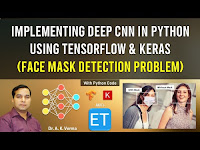The Walsh-Hadamard Transform is non-sinusoidal, orthogonal transform that is widely used in the areas of signals and image processing.
This video has following contents:
- Introduction and Applications.
- Forward and Inverse Walsh-Hadamard Transform (1-D).
- Hadamard Matrix and Walsh Matrix (Sequency and Dyadic Ordering).
- WHT for Images.
- Example: Computing WHT of 1-D signals.
- Example: Computing WHT of 2-D signals.
- Fast WHT algorithm.
- MATLAB Code for filtering of Noisy ECG signal using WHT.
- MATLAB Code for Image Compression using WHT.






































